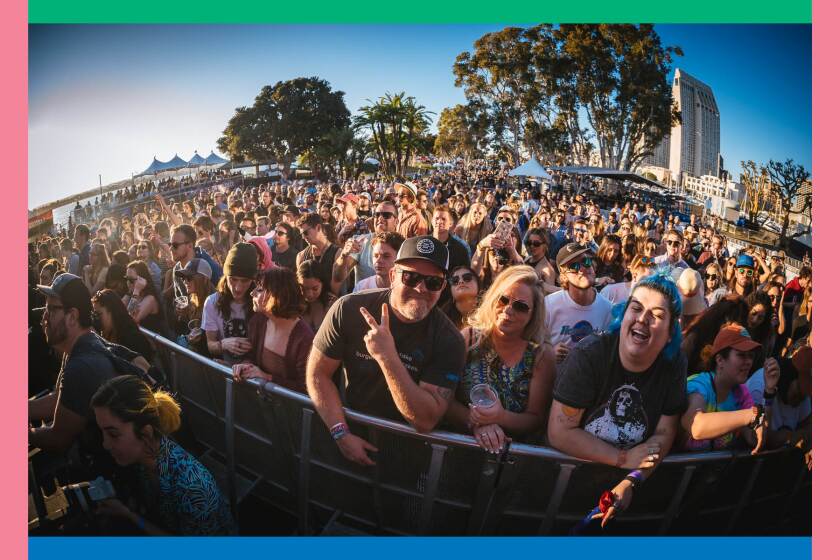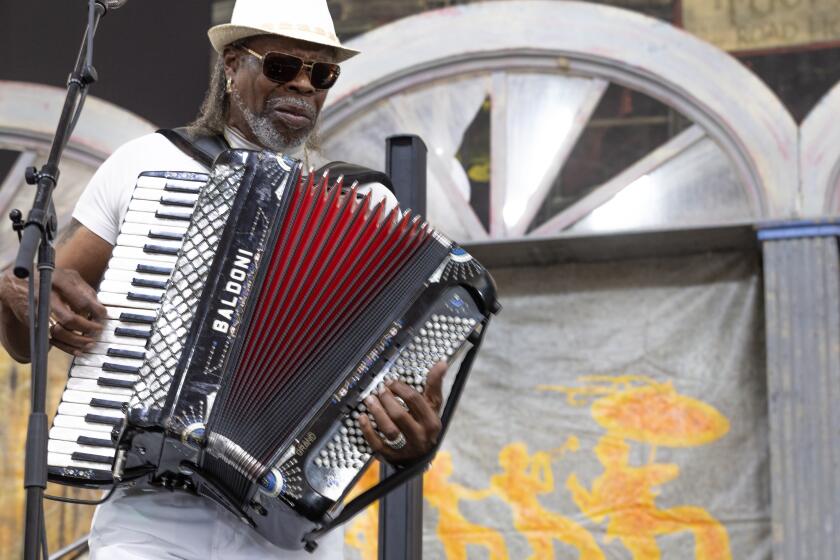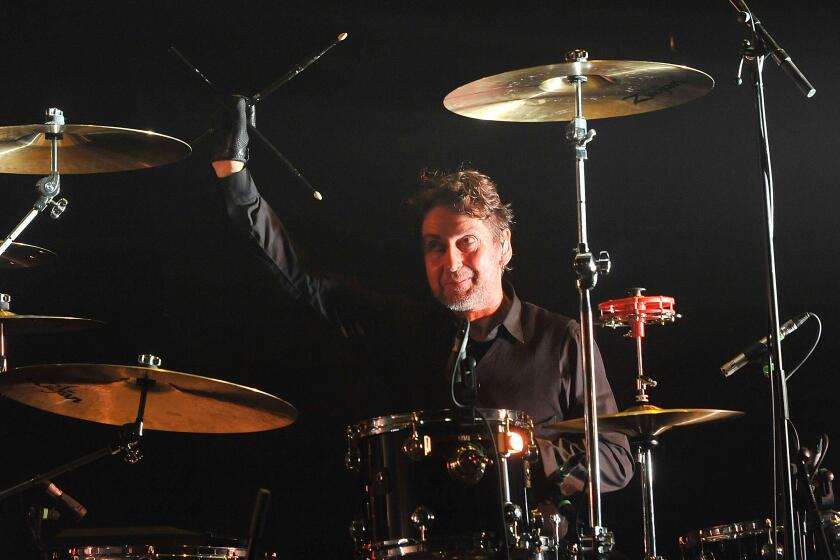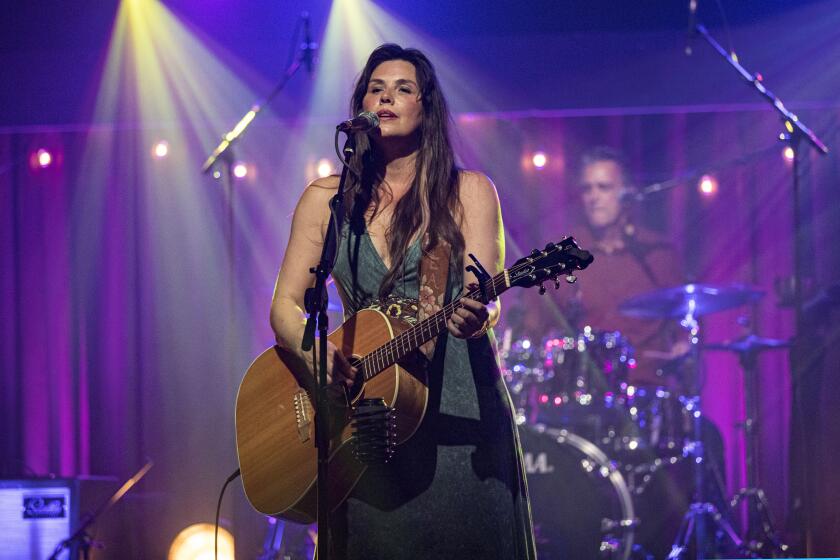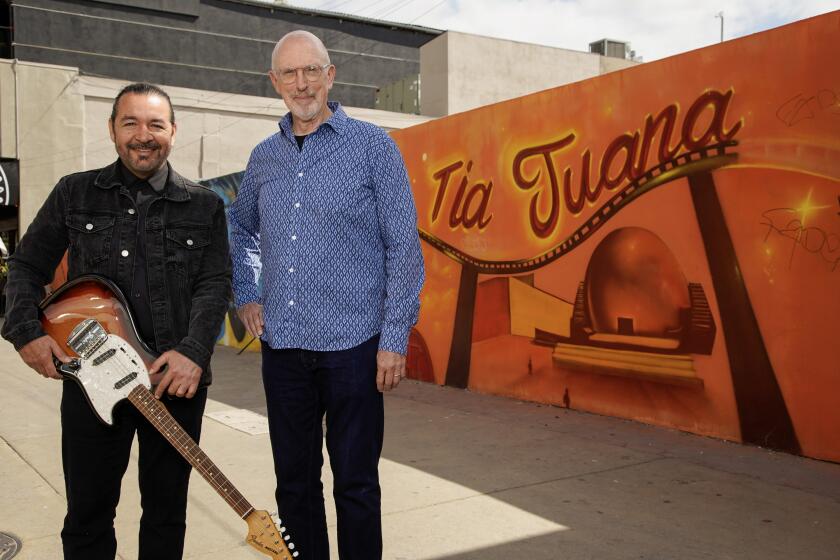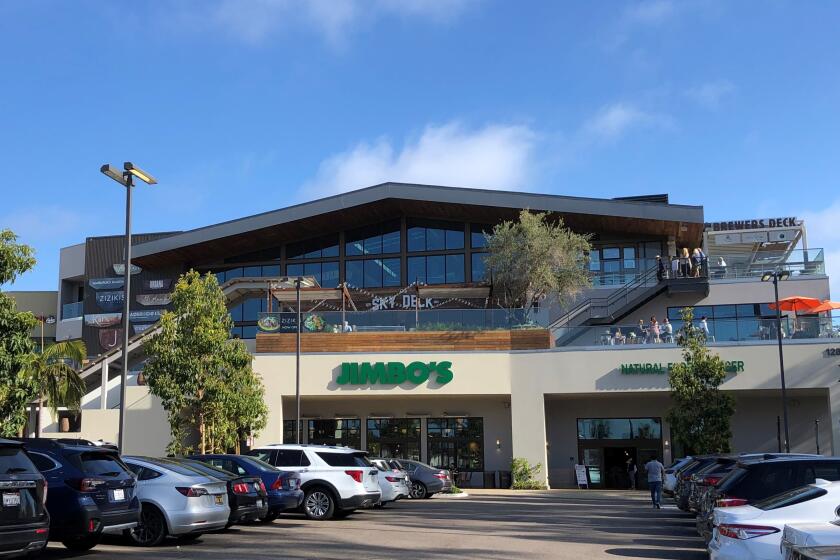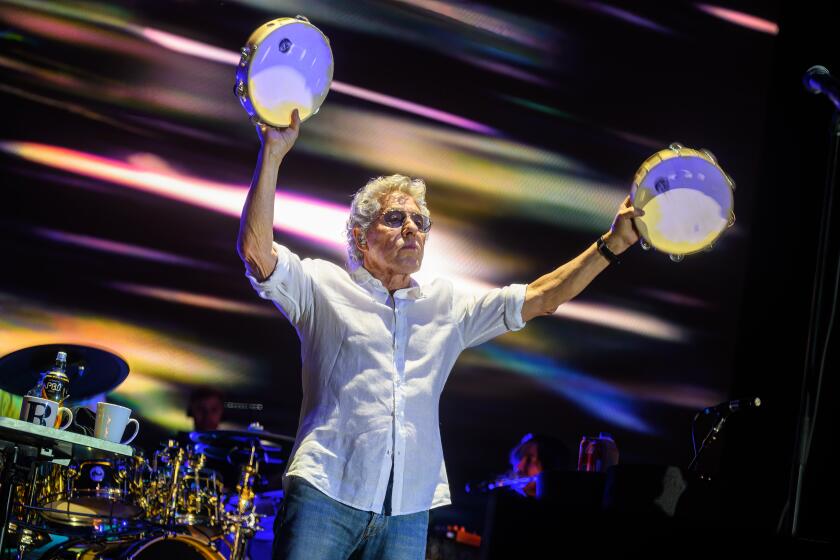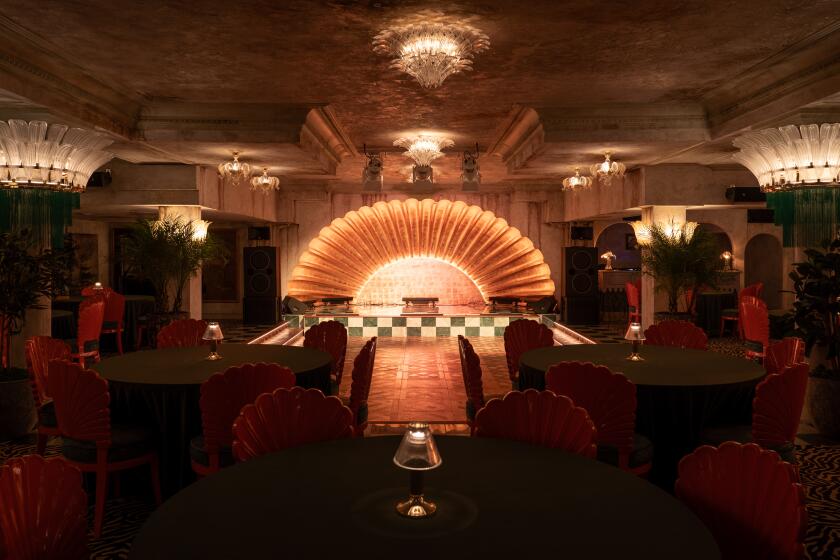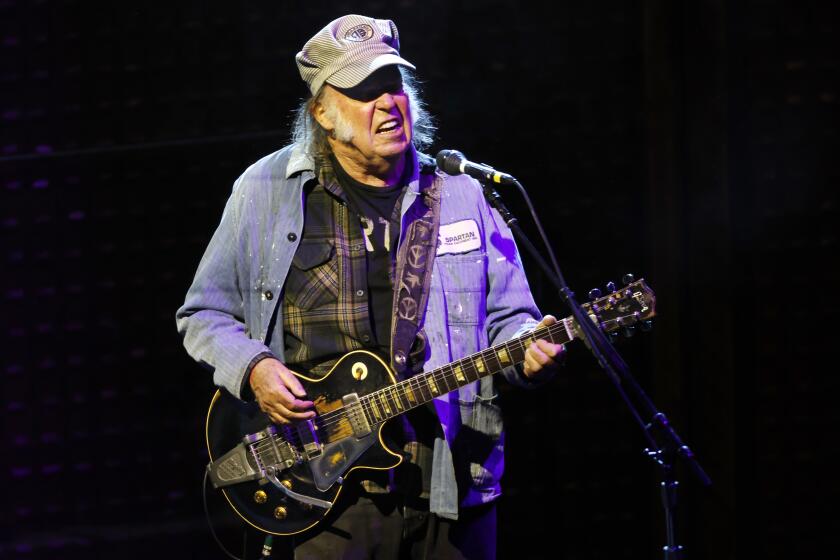David Bowie: In his own words
David Bowie will be rightfully remembered as a hugely inspirational, shape-shifting musician whose unique artistic vision stretched over nearly 50 years and extended to the worlds of film, theater, video, fashion, gender-bending sex personas and more.
His impact on popular culture is almost inestimable. Ditto his influence on several generations of listeners and musicians, including such disparate performers as Arcade Fire, Lorde, The Killers, Depeche Mode, Calvin Harris and Lady Gaga, who in 2013 declared of Bowie: “He’s sort of like an alien prince. He still runs my universe as well. ... Every morning I wake up, and I think: ’What would Bowie do?’”
But this English-born, New York-based renaissance man — who died Sunday from cancer, just two days after his 69th birthday — should also be remembered for something he received almost no publicity about. He was such a devoted parent to Alexandra, his 15-year-old daughter with his second wife, the model and actress Iman, that he walked away from his career to focus on her.
David Bowie: 1947-2016
- David Bowie, musician and artist, dies at 69
- David Bowie: In his own words
- Bowie’s impact on popular culture is almost inestimable
- David Bowie changed the very meaning of being a rock star
- Five songs to prove David Bowie is impossible to capture in five songs
- Appreciation: Celebrating David Bowie, whose songwriting transcended image
- 10 defining moments in the career of David Bowie
- Bowie lives on in theater
- David Bowie held powerful influence on fashion design
- Tributes for iconic singer David Bowie
- Key songs and albums from David Bowie’s renowned career
“When she turns 5 and starts school, I’m going to stop touring and recording,” Bowie said in a Union-Tribune interview in late 2003, shortly before the start of his final concert tour. “I’m going to stay home, so my wife and I can be there to watch her grow up.”
True to his word, he did exactly that.
Almost without fail, Bowie accompanied his daughter to school from their apartment in Manhattan’s Soho neighborhood. He spent summers with her and Iman at their country home in Woodstock and traveling abroad. The opportunity to forge such a close bond was with his daughter was one he did not take advantage of in his native London with Duncan Jones, his now-44-year-old son, whose mother is Bowie’s first wife, Angie.
“He walked Lexi to school every day — something he had missed with Duncan, which was something he deeply regretted,” Bowie biographer Paul Trynka told the Associated Press Monday.
Bowie, who had a mid-concert heart attack in 2004, never toured again. He stopped doing interviews, apart from one in 2007 to promote the Highline Festival, an 11-day music, film, comedy and art series that he curated. He did not make a new album until 2013’s brooding, intensely nostalgic “The Next Day,” whose stealth-like surprise release was subsequently emulated by Beyonce, Justin Timberlake and other superstars.
His jazz-inspired new album-cum-musical-eulogy, the darkly brilliant “Blackstar,” was released Friday, just two days before his death and 18 months after he had been diagnosed with cancer. His passing was announced late Sunday in a statement posted on his website. It read:
“David Bowie died peacefully today surrounded by his family after a courageous 18-month battle with cancer. While many of you will share in this loss, we ask that you respect the family’s privacy during their time of grief.”
Monday, tributes poured in for the man born David Robert Jones on Jan. 8, 1947, in London’s working-class Brixton neighborhood. (He changed his name to David Bowie in 1966, to avoid being confused with singer Davy Jones of the made-for-TV band The Monkees.)
“David was always an inspiration to me and a true original,” said Rolling Stones singer Mick Jagger, who collaborated with Bowie on stage and record. “He was wonderfully shameless in his work. We had so many good times together. ... He was my friend. I will never forget him.”
Kanye West hailed Bowie as “one of my most important inspirations, so fearless, so creative, he gave us magic for a lifetime.”
Madonna, who gave Bowie’s Rock and Roll Hall of Fame acceptance speech on his behalf in 1996, tweeted: “Talented. Unique. Genius. Game Changer.”
During a speech Monday in London, English Prime Minister David Cameron said: “Musically, creatively, artistically David Bowie was a genius.”
Bowie was also a creative sponge, soaking up influences from a dizzying array of styles and periods in music, literature, visual art, theater and film, then making them his own. During his constantly changing career, he first morphed from a Stones-styled blues-rocker to a hippie-esque troubadour, who scored his first hit in England with 1969’s suitably other-worldly “Space Oddity.”
He was only 8 years old when the saxophone drew him to music. The two records that cast a lifelong spell on him were jazz alto saxophonist Earl Bostic’s 1951 hit, “Flamingo” andLittle Richard’s “She’s Got It” (which featured tenor saxophonist Lee Allen).
“Those are two things that were total inspirations about what I wanted to do with my life,” Bowie said in a 1993 Union-Tribune interview.
“My father kindly got me a saxophone on what we call `hire-purchase,’ which was a little money down and then pay monthly for . . . 15 years! I got a white Ebonite saxophone; (top English saxophonist) Johnny Dankworth used to play one. It was flashy, an alto, and it was a sax. For a year or two after that, I delivered papers and did odd jobs to pay my father back. And I got a plastic reed to get something somewhere near the Bostic sound.”
Bowie briefly took lessons from baritone saxophonist Ronnie Russ, whom he regarded as England’s answer to American baritone sax star Gerry Mulligan.
“After seven lessons, I knew I had it under control, and said: ‘I know it all; I’m joining a rock band,’ ” Bowie recalled gleefully. “The irony is that when I produced Lou Reed’s Walk On The Wild Side,’ I hired Ronnie to play a solo. I walked out with red hair and no eyebrows and said: `You probably don’t remember me, but you gave me sax lessons when I was 10’!”
Asked in that same interview to evaluate his saxophone playing, Bowie quipped: “I feel I possibly have the technique of Bill Clinton and the enthusiasm of John Coltrane!”
Growing more serious, he explained how jazz had profoundly inspired his own music, saying: “Jazz has helped me realize that the accidents are happy surprises that can give you new insight. But the most important thing for me was (learning) that the spaces between the notes are where the action really is.
“Jazz was a music that seriously paralleled rock music for me when I was really young, between 8 and 12.I don’t know why, but I really felt at home with modern jazz. I don’t know whether it was the clothes, but the Modern Jazz Quartet had a huge appeal to me. And because I liked what it looked like, I wanted to understand how it worked.
“I think I often approach things like that; my eyes are very sensitive to what they receive and that can often help me make a first assessment. So I liked rock because of the way it looked and I liked jazz because of the way it looked, and from that I was able to sort of get into it. I feel jazz may have set me off on this idea that `planned accidents’ are truly wonderful experiences in music.
“And, of course, some of the albums that meant a great deal to me as a kid were by (iconic 20th century classical composer Igor) Stravinsky, for the same reason, the cacophony. You know, there were screams and yells of music, and I thought, God, this is scary and I really like it.’ (Stravinsky’s)`The Rites of Spring,’ at full volume on one of those old-fashioned record players, is like a trip to me.””
In 1972, Bowie helped pioneer glam-rock with his concept album “The Rise and Fall of Ziggy Stardust and The Spiders From Mars.” His first chart-topping U.S. single was 1975’s blue-eyed-soul anthem, “Fame,” which he co-wrote with John Lennon and guitarist Carlos Alomar.
He made his San Diego concert debut on his 1974 “Diamond Dogs” tour at the Sports Arena, where he performed again in 1976 and 1978. His most recent concert here was a pair of shows in late 1991 at the Spreckels Theater with his short-lived band, Tin Machine.
Two future Pearl Jam members, singer Eddie Vedder and drummer Matt Cameron, saw Bowie at one of his San Diego Sports Arena concerts, as Vedder noted fondly from the stage at the same venue in 2003.
Bowie went on to make a series of landmark albums that saw him explore blue-eyed soul one moment, cutting-edge electronic rock the next, and various other genres along the way. The trilogy of edgy, avant-pop albums Bowie made in Berlin with producer Brian Eno between 1976 and 1979 — “Station to Station,” “Low” and “Lodger” — still sound fresh and daring today.
His Berlin sojourn was also designed to help him kick his debilitating drug habit, although he was unaware that Berlin was then the heroin capital of Europe. In 2003, he gave up his last vice, smoking.
“It got to the point where I was no longer enjoying it; I would just despise every cigarette I took out of the box,” Bowie said in his 2003 Union-Tribune interview. “I put up little signs on my computer, like: ‘Life is a break between smoking.’ ”
That was an unusually straightforward message (albeit only for his eyes) from Bowie, who throughout his career wrote lyrics were that were deliberately enigmatic.
“It’s so difficult,” he said in his 2003 Union-Tribune interview. “Because I try, in as many ways as I can, to avoid (discussing) the subject matters of my songs. You know: ‘Make of it what you will,’”
In 1976, Bowie starred in his first film, director Nicholas Roeg’s “The Man Who Fell to Earth,” in which he portrayed a doomed visitor from another galaxy. It was a role Bowie tackled with relish, although his best screen work came in the little-seen 1983 film “Merry Christmas Mr. Lawrence.” It followed his acclaimed starring role in a 1980 and 1981 Broadway production of “The Elephant Man.”
He achieved global superstardom with his 1983 album “Let’s Dance,” which included such hit singles and music videos as the title track, “China Girl” and “Modern Love.” Stadium tours followed. Yet, while Bowie’s theatrical flair translated well to a stadium setting, his music did not, and he spent more than a decade retrenching and trying and discarding musical style, from techno to jungle, as if they were stage costumes.
“Virtually everything I did in the ’90s was a fresh page,” he acknowledged in a 2002 Union-Tribune interview.
“It was good to jump in the deep end and locate myself in a place where the audience didn’t know what I was doing. I often have to do things to surprise myself and to keep my eyes on what I wanted to do when I started making records, and that was to give myself an obstacle to overcome. And one of the first things I could do was to stop making ‘the big hits.’
Bowie demurred when asked if his fear of becoming a retro-styled nostalgia rock act prompted him to do a “farewell to my hits” tour in 1989, then form the defiantly hard-rocking band Tin Machine the same year.
“No,” he said. “I was so deathly bored with doing those kind of `stadium hits’ shows. I’d had ages of doing that, and it was driving me crazy. It wasn’t what I ever wanted to do.”
Really, I asked him? Not even in 1969, when he was struggling to get a foot in the door of any nightclub that would have him, let alone a stadium?
Bowie laughed. “I’m sure I would have been thrilled,” he admitted.
And what if someone back then had warned Bowie at the time: Watch out what you wish for because you may get it?
“I wouldn’t have believed them,” he replied. “I thought (commercial success) would have been my dream come true. It’s fine (singing your hits) for two or three shows, but after 100 shows, it becomes something else.
“The success of things like ‘Let’s Dance’ was an anomaly, really. I’ve had the same buying audience since Ziggy Stardust,’ and none of those albums did well when they were released; the sales accumulate over the years.”
As for his eye-popping fashion sense, he explained: “I got a lot of cues from the Dadaists, and how you could redirect the audience’s attention with some atrocious trousers. I have shoes that were made for me that I have never worn at all (because) they are life-threatening!”
Bowie married Somalian supermodel Iman in 1992. In 1997, he celebrated his 50th birthday with a concert at Madison Square Garden that teamed him with such avowed Bowie fans as the Foo Fighters, Robert Smith of The Cure, Billy Corgan of Smashing Pumpkins and Lou Reed, whose 1972 album, “Transformer,” was produced by Bowie. Bowie also produced The Stooges’ “Raw Power” album and wrote Mott The Hoople’s breakthrough hit, “All the Young Dudes.”
His genre-leaping impact was perhaps demonstrated by “David Bowie is,” the career-spanning retrospective exhibition that debuted in 2013 at London’s Victoria & Albert Museum, where it drew a record 1.3 million visitors. The exhibit has since been staged in museums in Toronto, São Paulo, Berlin, Chicago, Paris, Melbourne and, currently, the Dutch city of Groningen.
Isolation, abandonment and mortality were among the subjects Bowie most often wrote about, right through to his new album, “Blackstar.” One of its standout songs, the album-closing “I Can’t Give Everything Away,” seems to foretell his death, with such stark lyrics as: “I know something is very wrong / The blackout hearts, the flowered news / With skull designs upon my shoes ... I can’t give everything away.”
“There are half-a-dozen subjects that I return to time and time again, and that doesn’t bother me,” Bowie said in 2003. “Because most of my favorite writers do that, to hunt down the same topic or theme from different directions each time.”
And how spiritual a man did Bowie consider himself?
“Extremely,” he told me in 2002. “Not religious. Spiritual. I think it’s been the backbone of a lot of my writing; it’s the subject matter of what I’ve written for 40 years. It’s always been about isolation, a sense of abandonment; it’s really quite morose!”
On “Lazarus,” his new album’s penultimate selection, Bowie begins by singing: “Look at me, I’m in heaven.” In the video for the same song,.which takes its title from Bowie’s new off-Broadway musical, he is shown in a hospital bed, then retreats into a closet.
Tony Visconti, who produced “Blackstar” and some of Bowie’s most striking albums over the past five decades, wrote on his Facebook page that Bowie was acutely aware his life was drawing to an end as he made “Blackstar.”
“His death was no different from his life — a work of art,” Visconti wrote. “He made Blackstar for us, his parting gift. I knew for a year this was the way it would be. I wasn’t, however, prepared for it. He was an extraordinary man, full of love and life. He will always be with us. For now, it is appropriate to cry.”
Get U-T Arts & Culture on Thursdays
A San Diego insider’s look at what talented artists are bringing to the stage, screen, galleries and more.
You may occasionally receive promotional content from the San Diego Union-Tribune.

